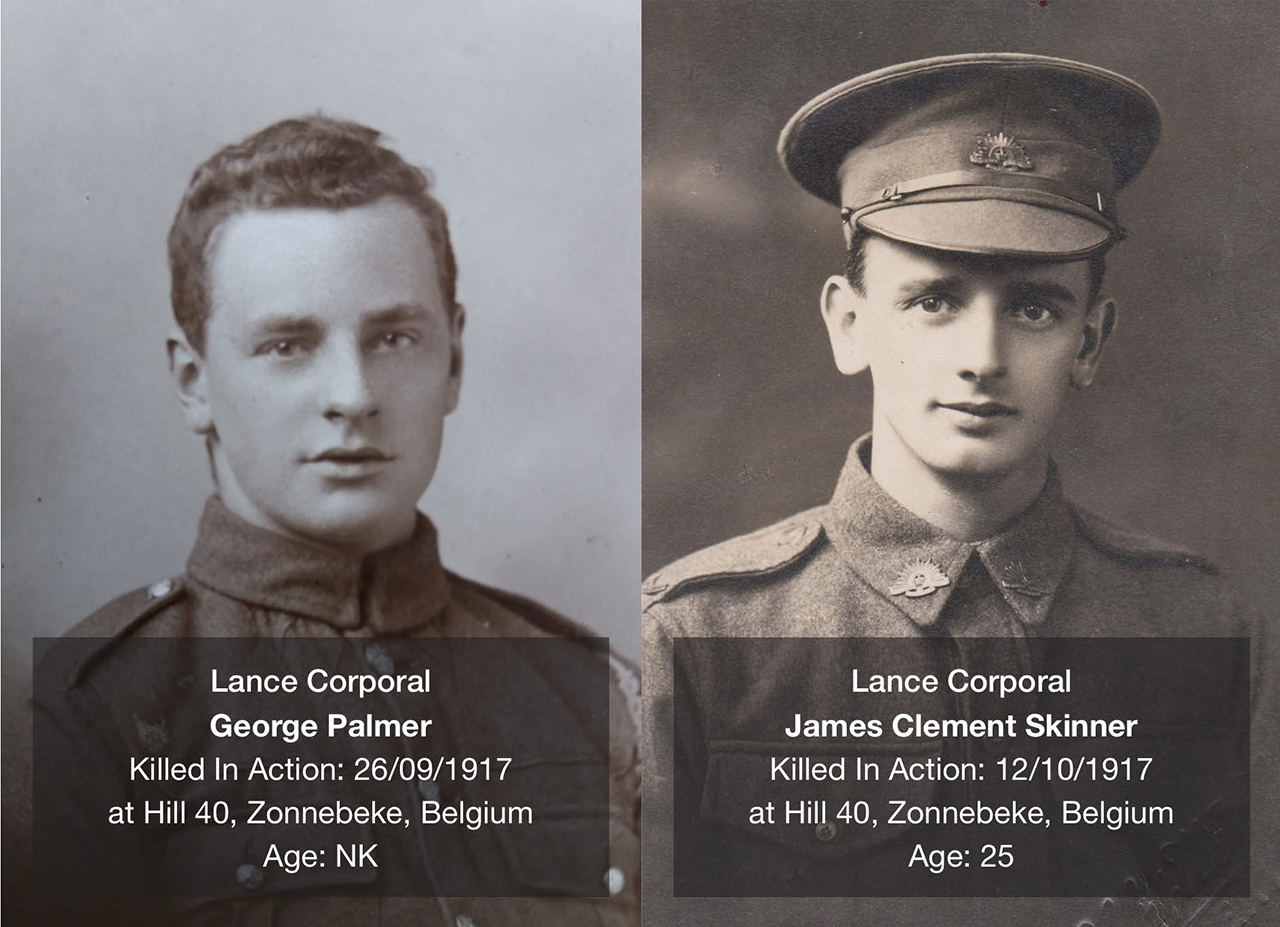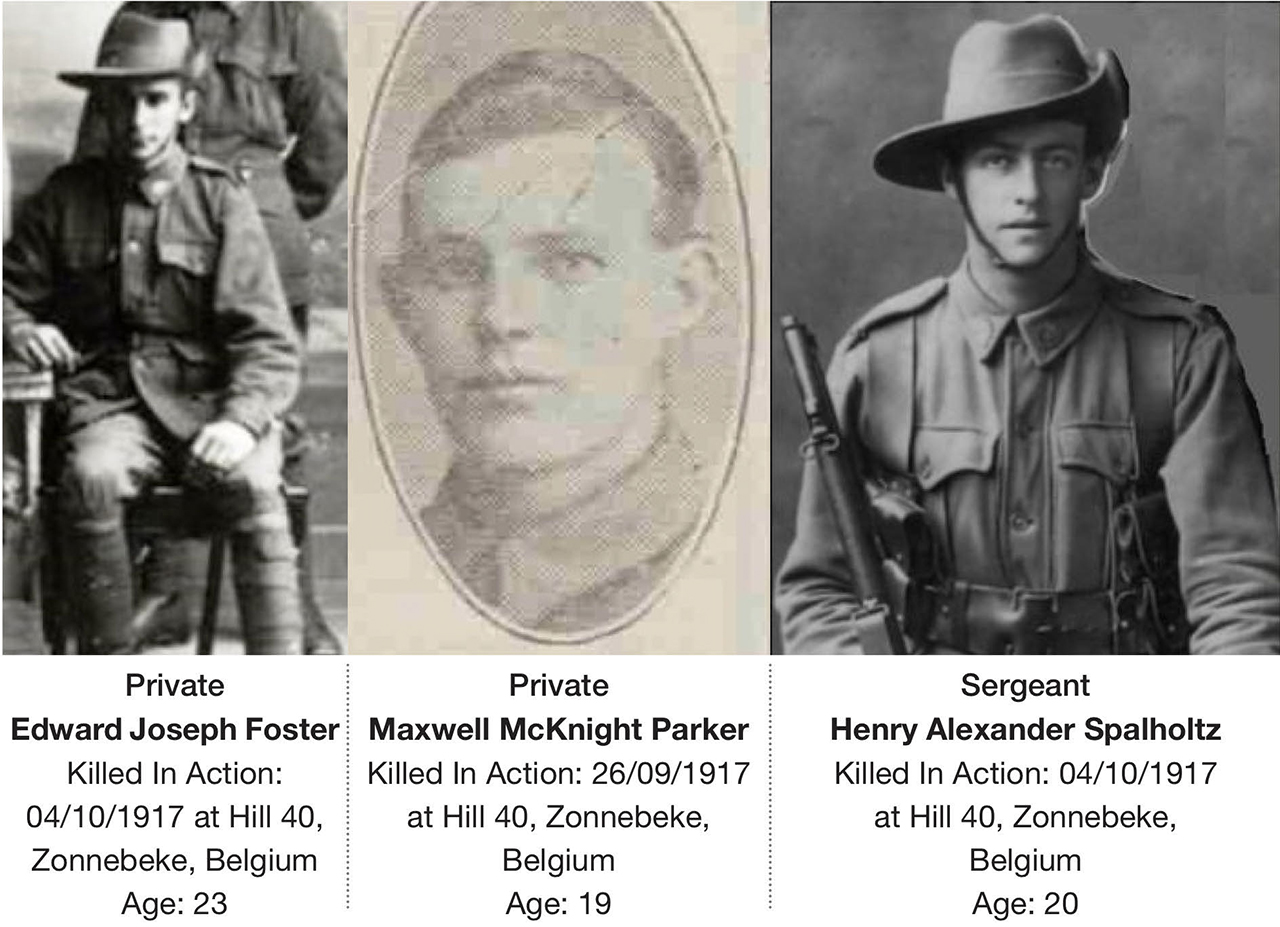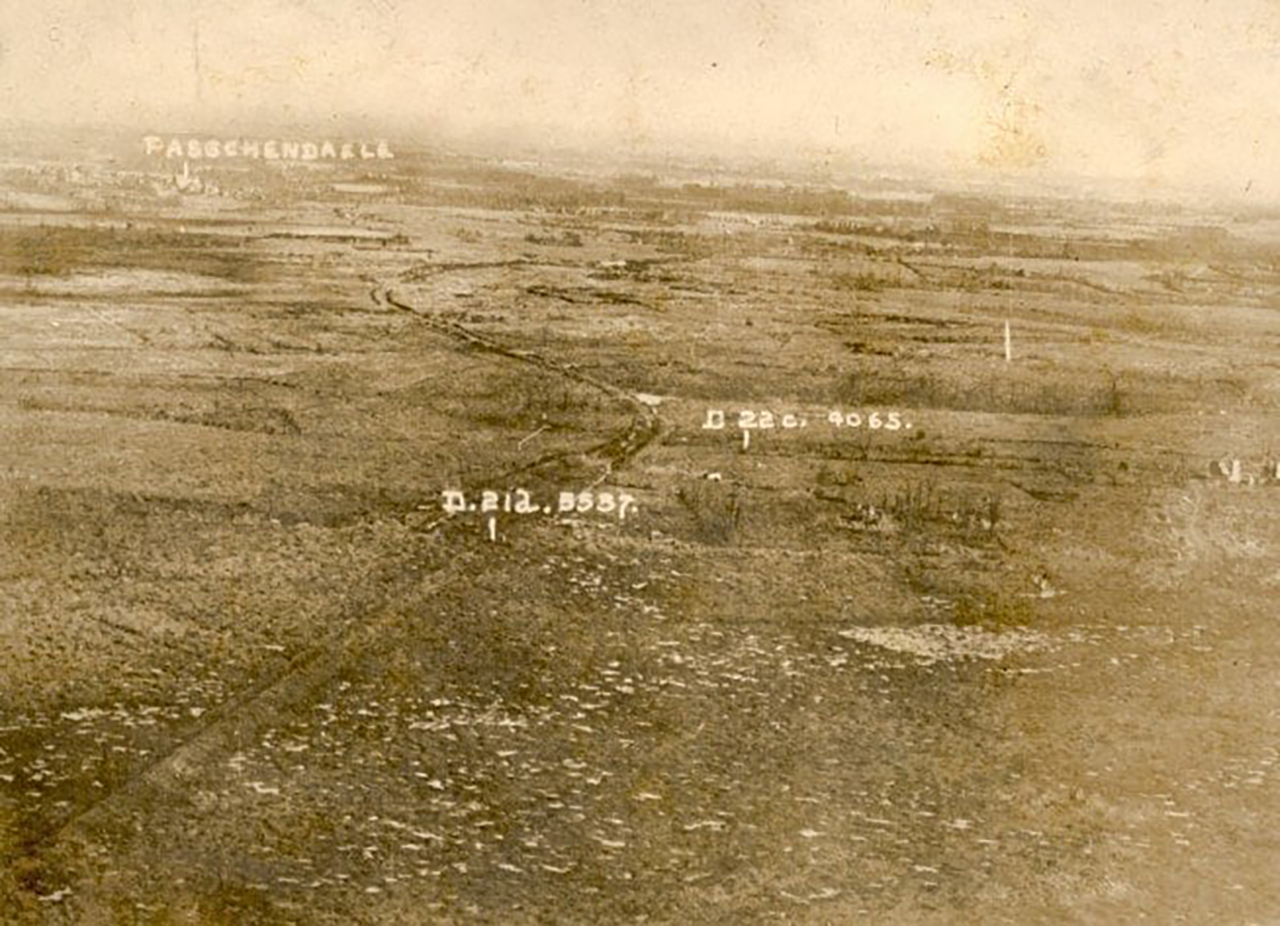The 10th of November 2025 is the 108th anniversary of the Battle of Passchendaele or the Third Battle of Ypres. It started on 31 July and ended on 10 November 1917. 102 days of bloodshed. During that time, the Allies lost approximately 250,000 men.
Passchendaele became synonymous with mud, blood and futility.
The battle took place for control of the ridges south and east of the Belgian city of Ypres in West Flanders. The high ground in the Ypres Salient offered vital observation points, making small hills strategically important and the focus of intense, costly local engagements throughout the war.
Hill 40 was one such hill. Part of the Battle of Polygon Wood. It saw fierce fighting several times during the course of Passchendaele.
One report of the fighting from the 4th October 1917:
Incomparable Fire.
Viewed from the westward, the whole scene from Paschendael Ridge and Hill 40, westward of Zonnebeke, and a line from the crest to Polygon Wood, was veiled in smoke and mist through which the ridge loomed darkly with a black hump where Broodseinde stands.
But one clearly saw the white and yellow cloudbursts of our shellfire and the flame of the shellbursts.
Great as were the bombardments at the Somme, Vimy, Arras, and Messines in frightfulness, they are not comparable with this, the most terrible outburst witnessed in the whole course of the war.
The entire Paschendael crest is like a series of Volcanoes, belching up pillars of earth and fire.
It seemed incredible that any men should have lived through it all, yet along the pathways between the deep shell craters came a stream of prisoners and a trail of our walking wounded.
It was a tragic sight, despite its proof of victory and the valour of our men and the spirit of our wounded, who, bearing their pain with stoic patience, were overheard saying, “It has been a good day.”
The prisoners were haggard, white faced, thin, worn, weary, and frightened. Many were badly wounded.
The high ground of Broodseinde dominating the position has seen a wonderful battle in the fullness of success, and if we can keep what we have gained it will be the biggest victory of the war on the British front.
Nothing stopped our men.”
The Register (Adelaide, SA) Saturday 6 October 1917, Page 7
Lesser known than the infamous Hill 60 in Zillebeke, where the single largest explosion of the First World War, along with artillery fire, reduced it in height to just 13 ft. Today, Hill 60 is a battlefield memorial site and park.
In 2018, another hill, Hill 80, was excavated, organised by battlefield archaeologist Simon Verdegem, with the support of historian Dan Snow and comedian Al Murray. Hill 80 was rediscovered in 2015 when housing companies sought to develop the land. With no farming taking place there, the trenches were extremely well-preserved: with the discovery of bullets, uniforms, water bottles, combs and the bodies of German and British soldiers.
Hill 40 might have long been forgotten to most, and today it is a modern Belgian housing estate. But it lives on in the families of those who fought and were lost there.
It also gave its name to a little-known Bingo Nickname, which I uncovered in an American Journal, written by John A Level recounting his time in the war and mixing with British Tommies and their war vocabulary, which he called “A Language in Itself”.
Today, Hill 40 and the valour of all those who fought there, as well as the lives lost, live on.
Dedicated to all those killed on Hill 40
| Rank | Name | Age | Battalion | Date of Death |
|---|---|---|---|---|
| Private | Robert Brown | 25 | Royal Scots Fusiliers, 1st Bn. | 26/09/1917 |
| Second Lieutenant | William Cochrane | 20 | Royal Scots Fusiliers, 1st Bn. | 26/09/1917 |
| Private | Edward Joseph Foster | 23 | Australian Infantry, 43rd Bn. (The Hindmarsh Regiment) | 04/10/1917 |
| Private | Alexander Fraser | Royal Scots Fusiliers, 1st Bn. | 26/09/1917 | |
| Private | John Edward Gledhill | 30 | Royal Scots Fusiliers, 1st Bn. | 26/09/1917 |
| Private | Edward Taylor Heath | 22 | Royal Scots (Lothian Regiment), 2nd Bn. | 26/09/1917 |
| Private | Robert Stuart Henderson | 19 | Royal Scots (Lothian Regiment), 2nd Bn | 26/09/1917 |
| Private | Peter Kierney | Royal Scots Fusiliers, 1st Bn. | 26/09/1917 | |
| Lance Corporal | George Palmer | 21 | Royal Scots Fusiliers, 1st Bn. | 26/09/1917 |
| Private | Maxwell McKnight Parker | 19 | Royal Scots Fusiliers, 1st Bn | 26/09/1917 |
| Lance Corporal | James Alexander Robertson | 25 | Royal Scots, 2nd Bn. | 26/09/1917 |
| Lance Corporal | James Clement Skinner | 25 | Australian Infantry, 44th Bn. | 12/10/1917 |
| Sergeant | Henry Alexander Spalholtz | 20 | Australian Infantry, 43rd Bn. (The Hindmarsh Regiment) | 04/10/1917 |
| Corporal | Ernie Serls | Australian Infantry 44th Bn. | 04/10/1917 |
You can read more about the individual stories of the fallen of Hill 40 at the Passchendaele Archives https://archives.passchendaele.be/en/place/550
Postscript
Passchendaele was not even the bloodiest battle of the First World War. The Somme Offensive saw more than a million casualties. Three times as many British forces died on the first day of the Battle of the Somme (19,240) as have been killed in every combat operation since the end of WWII.
In comparison, one of the bloodiest days of WWII was D-Day, which saw 1,475 servicemen under British Command killed. To understand what this represents, you can visit the brilliant ‘For Your Tomorrow’ created by Standing with Giants at the Royal Armouries, Fort Nelson, Portsmouth. This moving tribute to the 1,475 servicemen under British Command who gave their lives on D-Day will stand proud until 25 January 2026.
There is a similar Falklands Tribute running until 30 November 2025 at Nothe Fort, Weymouth, which includes 255 life-sized silhouettes of military personnel and three civilians who lost their lives during the Falklands conflict in 1982.






Leave A Comment